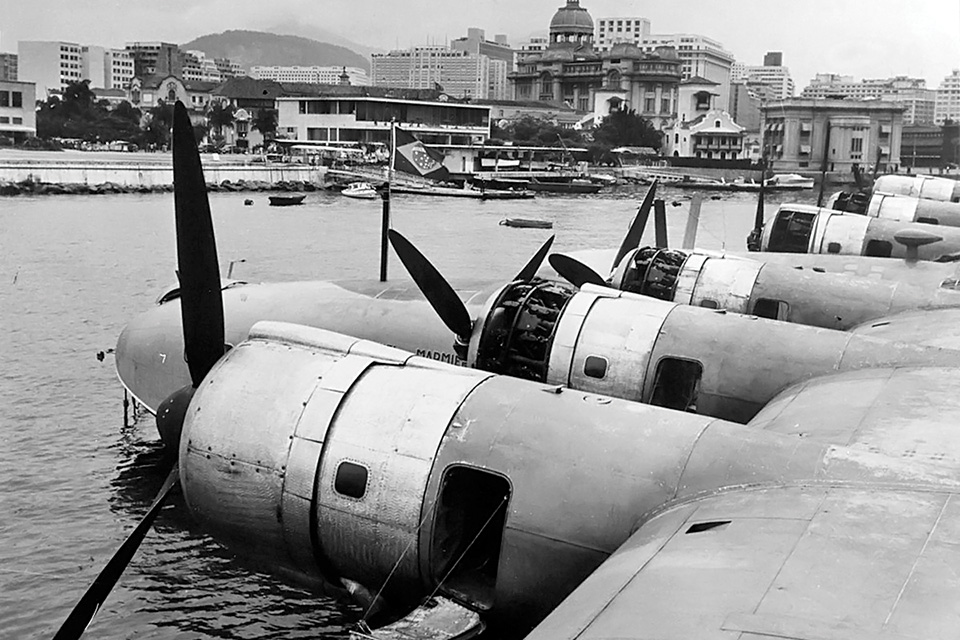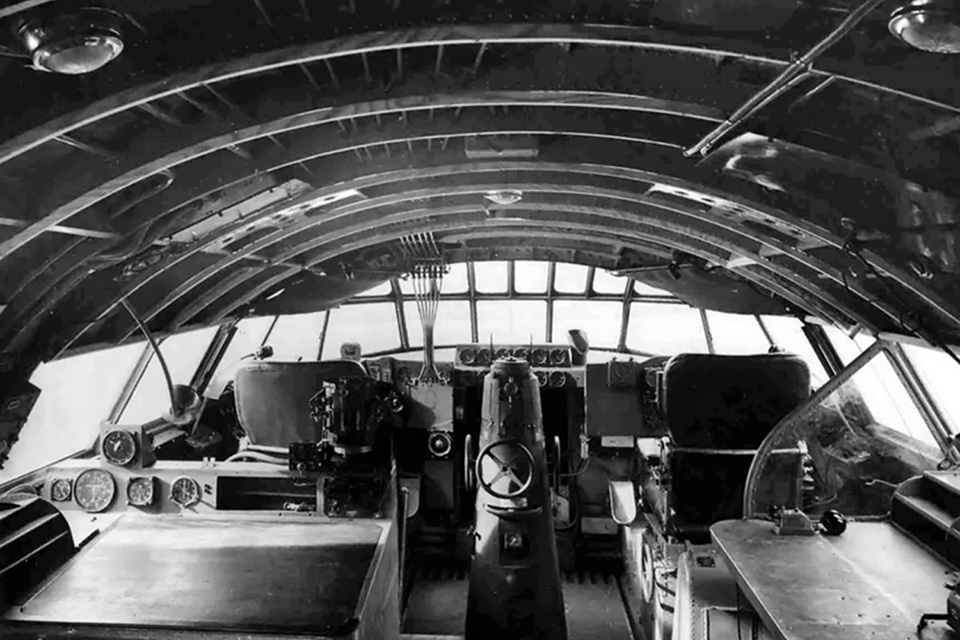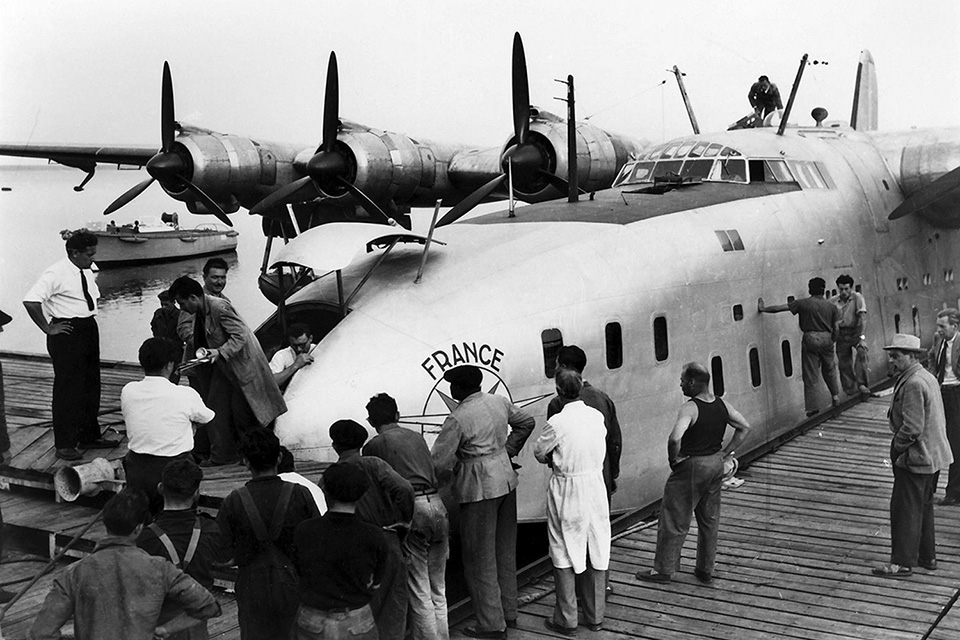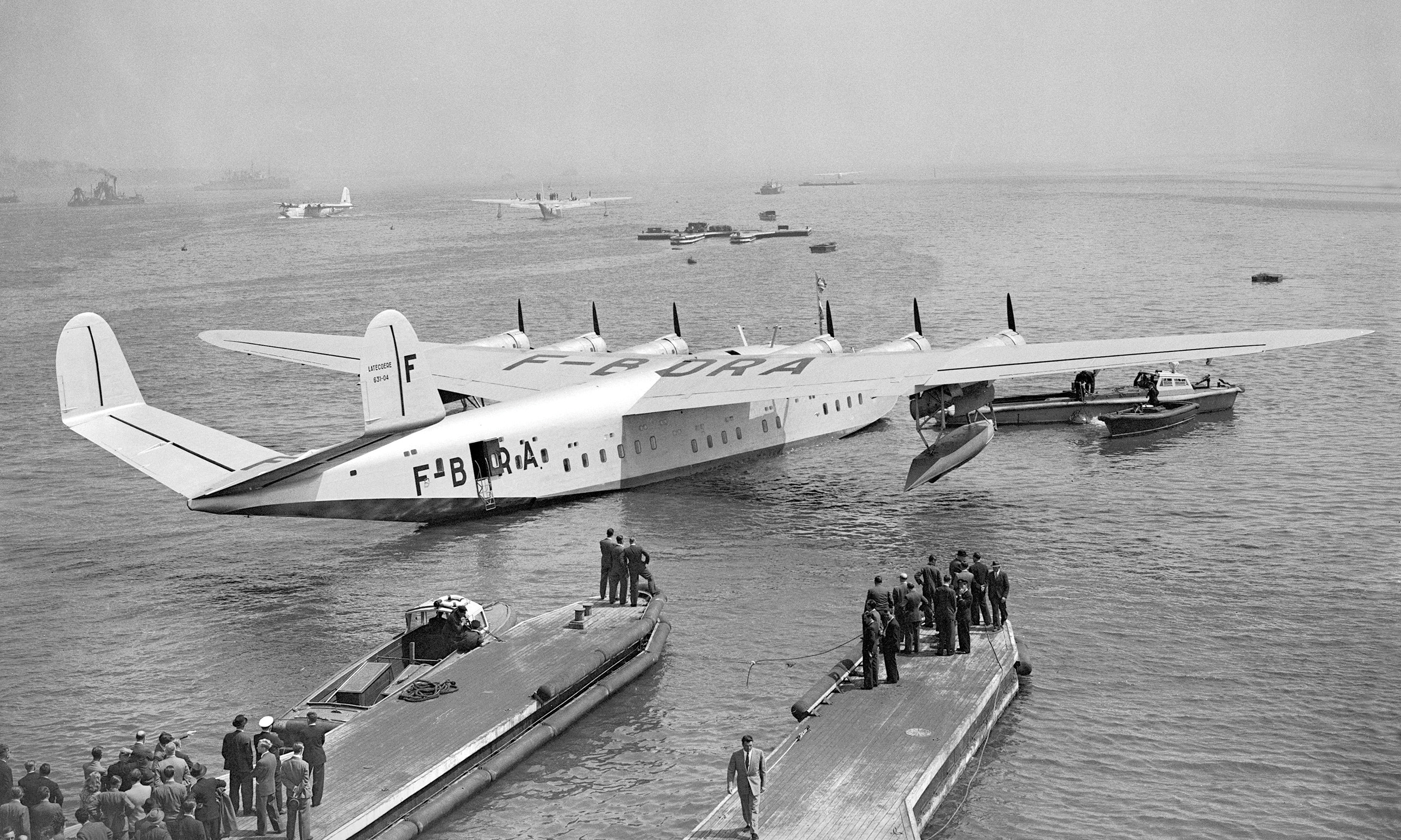The Latécoère 631 may have been the ultimate flying boat airliner but its service record left a lot to be desired.
Prior to World War II most large, long-range multiengine airliners were flying boats. Part of the reason for that was the weight of a land-based airliner’s landing gear, which was thought to exact a greater penalty on performance than the aerodynamic drag imposed by a flying boat’s hull. An additional consideration was the lack of the long runways required to accommodate big landplanes compared with the ready availability of suitable bodies of water from which flying boats could operate. A further incentive was the widespread belief that a flying boat would have a better chance of surviving if it had to ditch in the ocean.
During the 1920s and 1930s many large flying boat airliners were developed by Dornier in Germany; Martin, Sikorsky and Boeing in the United States; and Britain’s Saunders-Roe and Short Brothers. Less well known were the “big boats” developed by the French, mainly because they operated principally in Africa, Martinique, South America and the Mediterranean Sea. Arguably the finest of those were created by Latécoère. For that matter, among the largest and possibly the most elegant such aircraft ever produced was Latécoère’s—and France’s—last, the Model 631. Unfortunately for its builders, it enjoyed a less than stellar safety record and represented the end of the era of flying boat airliners.

Established in Toulouse in 1917, Groupe Latécoère got its start in the aviation business constructing 600 Salmson 2A2 aircraft for the French air service during World War I. In 1919 the company set up its own airline, for which it built its own airplanes. The airline subsequently became one of the founding components of Air France. Latécoère built its first flying boat in 1926 and established itself as one of the leading producers of such aircraft by the mid-1930s.
The Latécoère 631 originated from a 1936 request from the French Civil Aviation Authority for a flying boat airliner with accommodation for at least 40 passengers and a range of 6,000 kilometers (3,728 miles). The result was a graceful all-metal, high-wing flying boat powered by six 1,650-hp Gnome et Rhône radial engines. The aircraft was 142 feet long, with a wingspan of 188 feet and gross weight of 157,300 pounds. It featured an unusual and elegant V-tail with endplate fins and rudders, as well as stabilizing floats that retracted into the outboard engine nacelles to reduce drag, both features carried over from the Latécoère 611 four-engine maritime patrol bomber.

Although construction began in 1939, work on the project became protracted due to the outbreak of WWII, and the prototype did not make its maiden flight until November 4, 1942. Soon after that, however, the Allies landed in the Vichy French North African colonies of Algeria and Morocco, to which the Germans reacted by overrunning all of continental France. In the process, they seized the Latécoère 631 prototype and transported it to Germany. There it underwent flight testing on Lake Constance until it was destroyed in a raid by Royal Air Force de Havilland Mosquitoes in April 1944. Meanwhile, with the help of the French Resistance, Latécoère managed to conceal from the Germans the components of an incomplete second aircraft until it was assembled and flown on March 7, 1945.
After the liberation of France, the second Latécoère 631 became an object of national pride because it was tangible proof that the French aviation industry still existed. For some time after the war it was also the only French airliner capable of transatlantic flight. A total of 10 were eventually produced, the first four of which went to Air France. The production version accommodated 46 passengers and was powered by 1,600-hp Wright R-2600 Twin Cyclone radials.
It wasn’t long, alas, before the graceful-looking aircraft began experiencing problems. On October 31, 1945, a propeller blade separated from one of the engines, damaging another engine before slicing a 10-foot hole through the hull. Although the pilot managed to land the aircraft successfully, two passengers were killed.

Worse was to come. On February 21, 1948, a Latécoère 631 crashed into the English Channel during a snowstorm, killing all 19 people on board. On August 1 of that same year, another “Laté” 631 disappeared during a scheduled transatlantic flight, taking 40 passengers and 12 crew members with it. Although Air France ceased flying the 631 after that, the aircraft remained in service with other operators, mainly as cargo planes.
Even then, bad luck continued to dog the big boats. On March 28, 1950, another Latécoère 631 crashed during a test flight due to failure of the aileron linkage, killing all 12 on board. Finally, on September 10, 1955, a wing broke off a 631 during a cargo flight in Africa, resulting in the deaths of 16 crewmen and passengers. Of the total of 11 Latécoère 631s built, one had been destroyed by air attack, one survived a fatal in-flight accident and four were lost in fatal crashes—not a very admirable service record.
The Latécoère 631 was the largest flying boat in the world when it first flew in 1942, exceeding even the mighty Martin Mars in size. Only Britain’s Saunders-Roe Princess and Howard Hughes’ Hercules, neither of which appeared until after the war, were larger. By the time the 631 entered commercial service, however, the airlines were no longer impressed by the giant flying boats. The war had witnessed the proliferation both of big multiengine bombers and airfields constructed to accommodate them. As a result, once hostilities ended there were plenty of places from which to operate large land-based airliners. Furthermore, as their engines became more efficient and powerful, such airliners were proving far more economical and profitable than flying boats. Consequently, even without the fatal crashes, the Latécoère 631’s days were already numbered by the time it began its modest production run—along with the entire era of the majestic big boats.
This article originally appeared in the January 2022 issue of Aviation History. Subscribe today!





